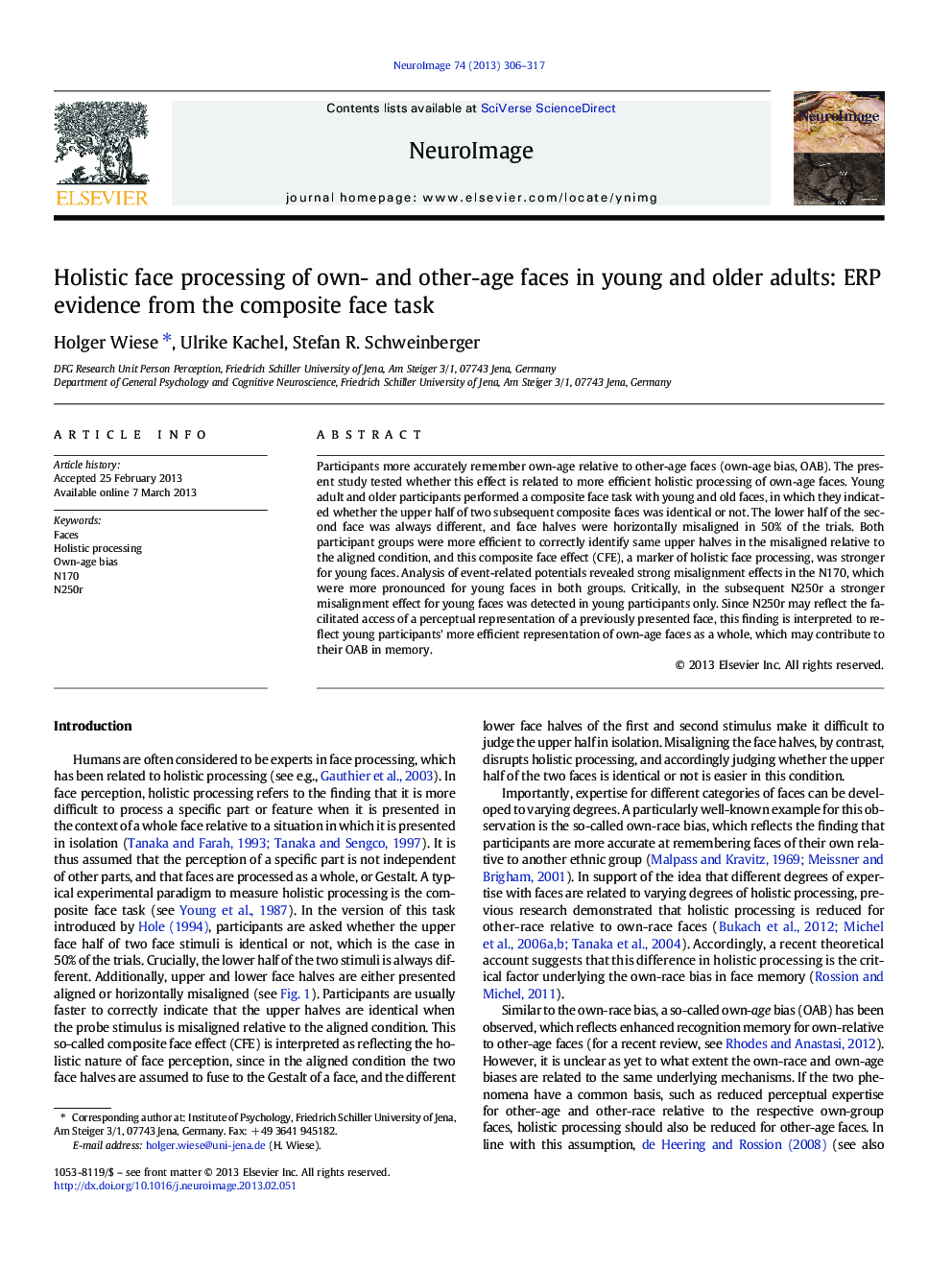| Article ID | Journal | Published Year | Pages | File Type |
|---|---|---|---|---|
| 6029826 | NeuroImage | 2013 | 12 Pages |
Abstract
Participants more accurately remember own-age relative to other-age faces (own-age bias, OAB). The present study tested whether this effect is related to more efficient holistic processing of own-age faces. Young adult and older participants performed a composite face task with young and old faces, in which they indicated whether the upper half of two subsequent composite faces was identical or not. The lower half of the second face was always different, and face halves were horizontally misaligned in 50% of the trials. Both participant groups were more efficient to correctly identify same upper halves in the misaligned relative to the aligned condition, and this composite face effect (CFE), a marker of holistic face processing, was stronger for young faces. Analysis of event-related potentials revealed strong misalignment effects in the N170, which were more pronounced for young faces in both groups. Critically, in the subsequent N250r a stronger misalignment effect for young faces was detected in young participants only. Since N250r may reflect the facilitated access of a perceptual representation of a previously presented face, this finding is interpreted to reflect young participants' more efficient representation of own-age faces as a whole, which may contribute to their OAB in memory.
Related Topics
Life Sciences
Neuroscience
Cognitive Neuroscience
Authors
Holger Wiese, Ulrike Kachel, Stefan R. Schweinberger,
